Community Scientists Trained to Participate in Bumble Bee Atlas Project
go.ncsu.edu/readext?945349
en Español / em Português
El inglés es el idioma de control de esta página. En la medida en que haya algún conflicto entre la traducción al inglés y la traducción, el inglés prevalece.
Al hacer clic en el enlace de traducción se activa un servicio de traducción gratuito para convertir la página al español. Al igual que con cualquier traducción por Internet, la conversión no es sensible al contexto y puede que no traduzca el texto en su significado original. NC State Extension no garantiza la exactitud del texto traducido. Por favor, tenga en cuenta que algunas aplicaciones y/o servicios pueden no funcionar como se espera cuando se traducen.
Português
Inglês é o idioma de controle desta página. Na medida que haja algum conflito entre o texto original em Inglês e a tradução, o Inglês prevalece.
Ao clicar no link de tradução, um serviço gratuito de tradução será ativado para converter a página para o Português. Como em qualquer tradução pela internet, a conversão não é sensivel ao contexto e pode não ocorrer a tradução para o significado orginal. O serviço de Extensão da Carolina do Norte (NC State Extension) não garante a exatidão do texto traduzido. Por favor, observe que algumas funções ou serviços podem não funcionar como esperado após a tradução.
English
English is the controlling language of this page. To the extent there is any conflict between the English text and the translation, English controls.
Clicking on the translation link activates a free translation service to convert the page to Spanish. As with any Internet translation, the conversion is not context-sensitive and may not translate the text to its original meaning. NC State Extension does not guarantee the accuracy of the translated text. Please note that some applications and/or services may not function as expected when translated.
Collapse ▲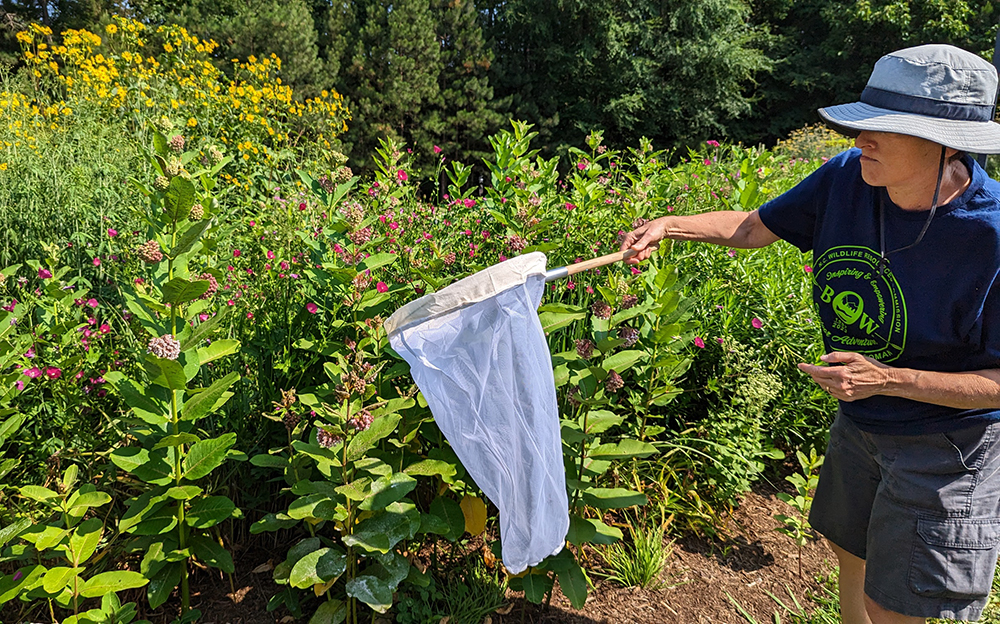
A participant practices netting bumble bees on the common milkweed at the pollinator garden. Photo by Debbie Roos.
In mid-June about 16 pollinator enthusiasts gathered at N.C. Cooperative Extension’s Pollinator Paradise Garden in Pittsboro to receive training as community scientists for the Southeast Bumble Bee Atlas Project. There are currently eight different Bumble Bee Atlas projects covering 15 states throughout the U.S. All are managed by The Xerces Society.
The Southeast Bumble Bee Atlas project launched earlier this year with the goal of gathering data to track and conserve bumble bees in North Carolina, South Carolina, Georgia, and Tennessee. Throughout North America, 25% of the approximately 50 species of bumble bees are experiencing serious population declines. In North Carolina we have 15 species of bumble bees and about half of those species are facing some degree of threat. This is very concerning as bumble bees are very important pollinators both of our natural areas and our food crops.
Volunteer community scientists are recruited for the project to help collect data about the bees and their habitat. No bees are harmed during the data collection – they are captured with a net, placed in a plastic vial in a cooler to chill which slows them down enough to be able to take a few pictures, then released. The photos are uploaded to the Bumble Bee Watch website along with a habitat assessment form. Experts examine the photos and identify the bee species which is entered into the database. The more volunteers out there tracking bees, the more data is collected over a wide geographic region. This data helps conservation biologists, habitat restoration practitioners, and policy makers in their efforts to conserve bumble bees.
The data collection season for the Southeast Bumble Bee Atlas runs through the end of September. If you are interested in participating you can watch training videos on the Atlas website and then sign up to adopt a grid cell. Anyone can become a community scientist and help with the Bumble Bee Atlas…no experience is required! Visit the Southeast Bumble Bee Atlas website for complete details.
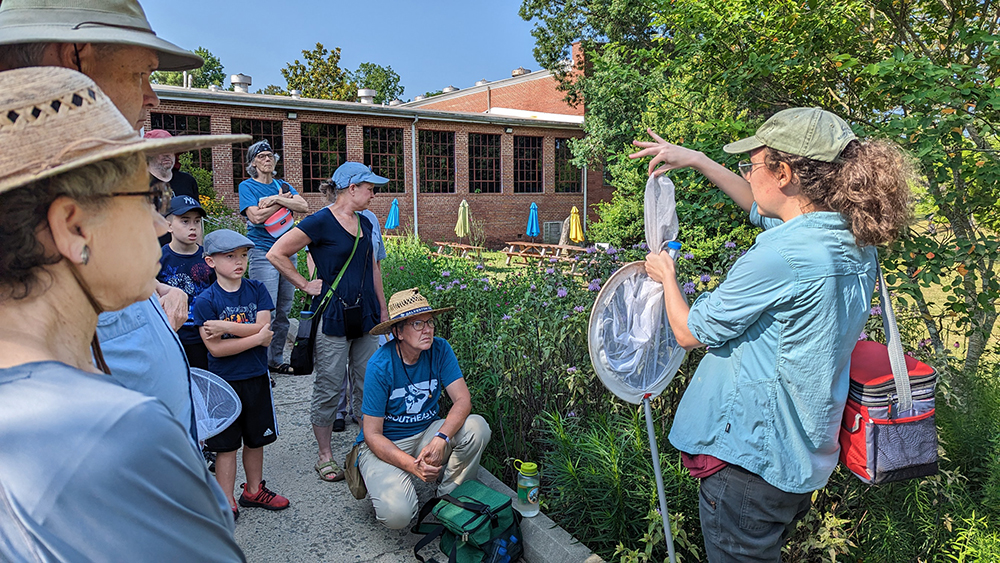
Laurie Hamon, Xerces Society Conservation Biologist and Project Manager for the Southeast Bumble Bee Atlas, demonstrates techniques for netting bumble bees. Photo by Debbie Roos.

Laurie demonstrates how to transfer the bee from the net to the plastic vial. Photo by Debbie Roos.

Laurie captures a bumble bee. Photo by Debbie Roos.

Participants practice capturing bumble bees in the pollinator garden. Photo by Debbie Roos.

The tricky part is transferring the bee from the net to the plastic vial! Photo by Debbie Roos.

This bee has successfully been captured and placed in a plastic vial. Photo by Debbie Roos.
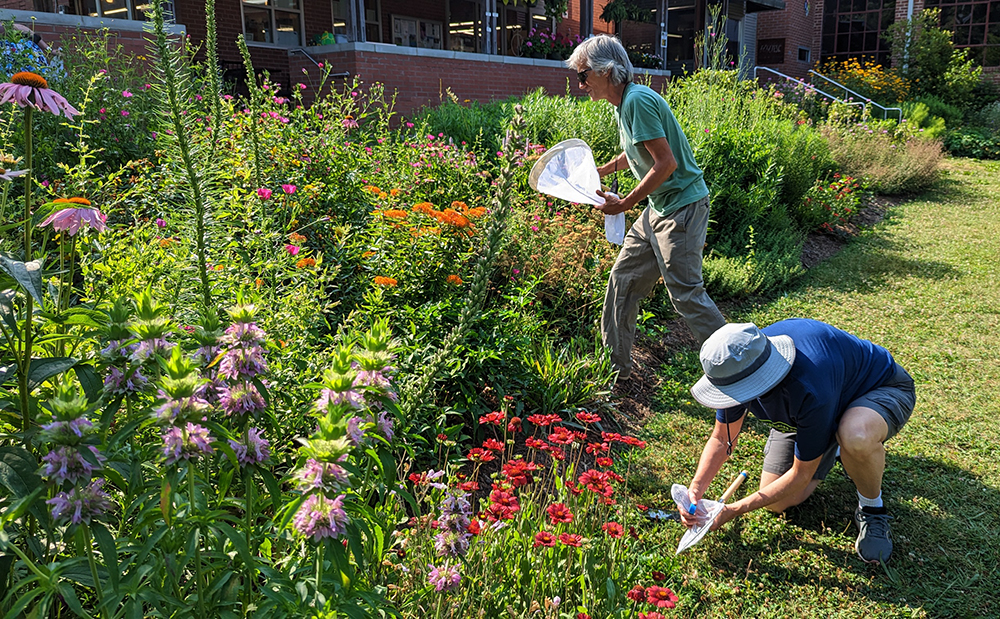
Participants practice netting bumble bees. Photo by Debbie Roos.

Laurie helps a participant transfer the bee to the plastic vial. Photo by Debbie Roos.

Laurie takes a photo of the plant the bee was captured on along with the number on the vial that holds the bee. Once the bee is positively identified there will be a record of the plant species it was captured on. Photo by Debbie Roos.

Practicing netting bumble bees. Photo by Debbie Roos.

The captured bees are chilled in a cooler with ice to slow them down temporarily in order to get photos for identification. Photo by Debbie Roos.
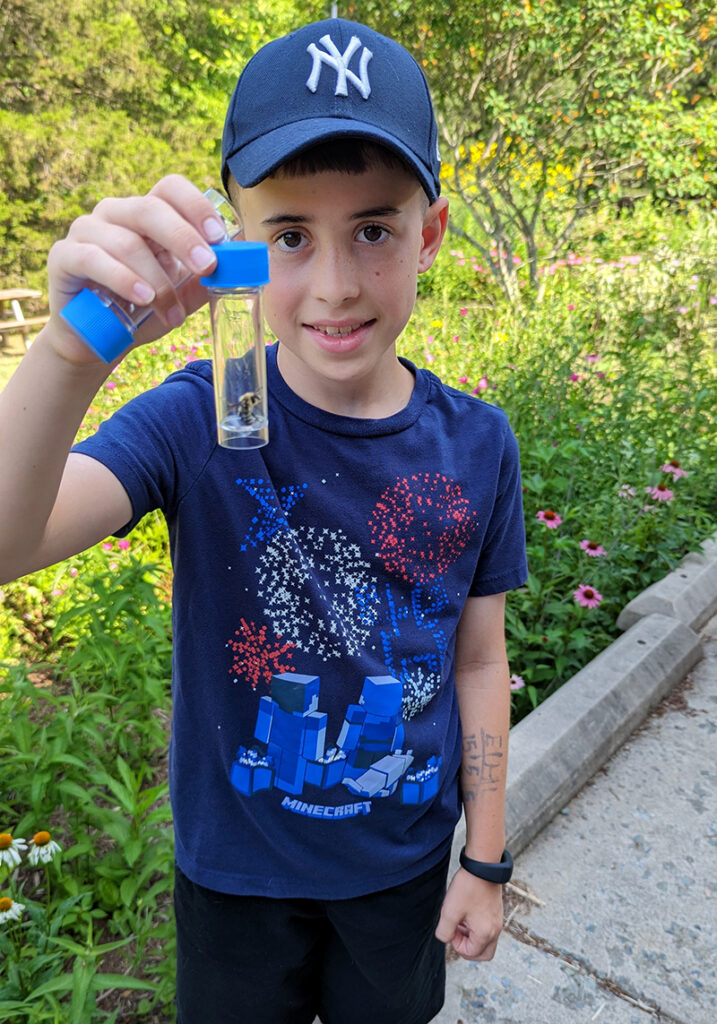
Successful capture! Photo by Debbie Roos.

Practicing netting bumble bees. Photo by Debbie Roos.

Observing bees on flowers. Photo by Debbie Roos.

Observing bees on flowers. Photo by Debbie Roos.
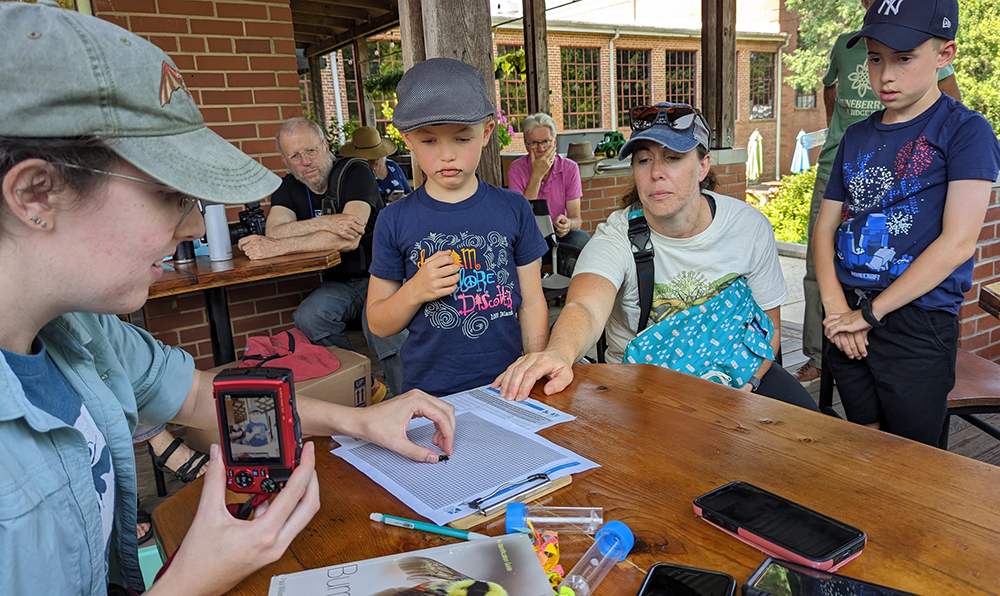
Laurie shares tips on how to photograph the bees. The bees are photographed from different angles to make sure and include characteristics that help identify to species. Photo by Debbie Roos.

Taking photos of the captured bees. The photos, along with the plant species it was captured on and a habitat assessment form, are uploaded to the Bumble Bee Watch website. Photo by Debbie Roos.
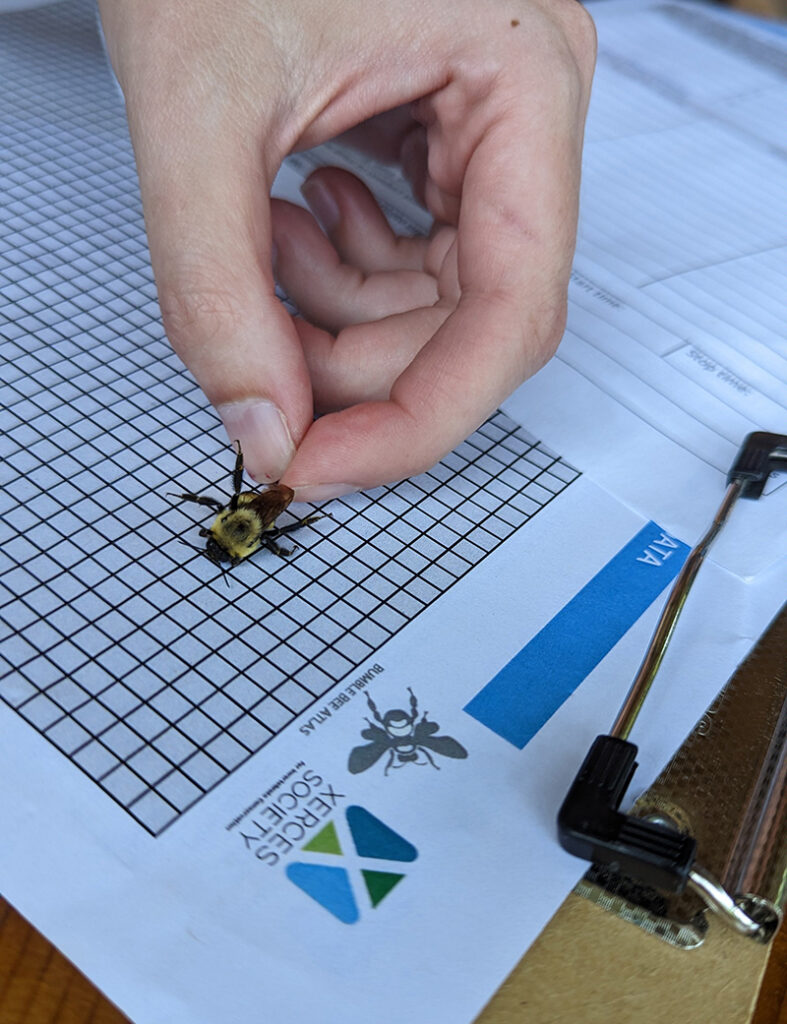
The most common bumble bees in the North Carolina piedmont region are the brown-belted bumble bee (Bombus griseocollis), the common eastern bumble bee (Bombus impatiens), and the two spotted bumble bee (Bombus bimaculatus). Photo by Debbie Roos.


